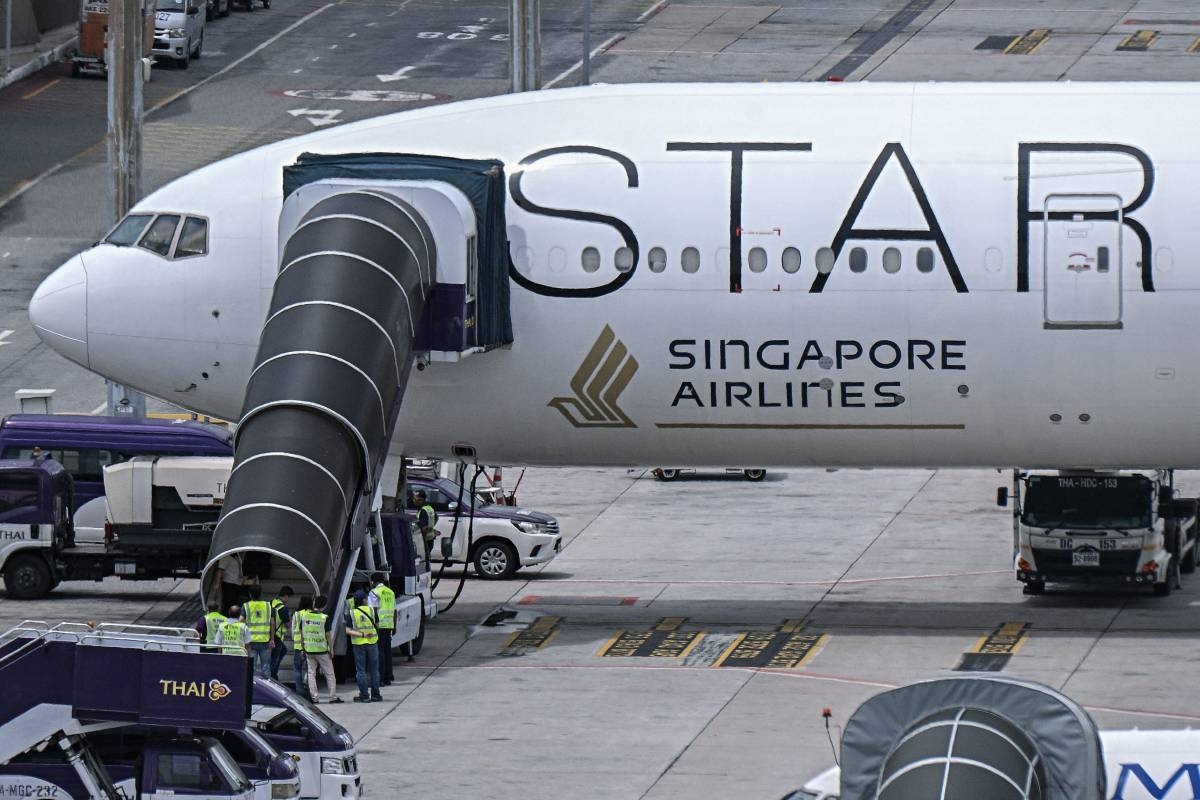
WHAT AIRLINES CAN DO ABOUT DANGEROUS INVISIBLE TURBULENCE
The death of a passenger on board a Singapore Airlines flight caught in extreme turbulence last week is a stark illustration of why the industry is racing to find new ways to counter the rising threat as the climate changes.
Geoff Kitchen, a 73-year old British man, died after flight SQ321 hit turbulence at 37,000 feet over the Myanmar-Thai border, 10 hours into its flight between London Heathrow Airport and Singapore.
Twenty people remained in intensive care on Thursday, with some requiring spinal operations, according to authorities in Bangkok, where the flight made an emergency landing.
Such fatalities and serious injuries are rare, with aircraft designed to handle significant turbulence without structural damage.
But as investigators were dispatched to Bangkok to begin a formal probe, airlines are facing up to the fact that turbulence, already the leading cause of non-fatal injuries in on-board accidents, is becoming more common and more severe as global warming affects weather patterns and the earth's atmosphere.
"At flight cruising levels of 35-40,000 feet, pretty much the entire planet is a turbulent zone... you cannot escape it," said Paul Williams, a professor of atmospheric science at the University of Reading.
There are two common types of turbulence, or sudden, sharp changes to air flow, in the atmosphere.
Storms cause major changes in wind strength and air flow, and thunderstorms in particular can endanger aircraft. But these show up on weather radars, and can be avoided in flight.
The other common type, "clear air turbulence", is invisible and therefore seen as more dangerous. It does not show up on cockpit instruments and the only warnings are from aircraft that have already been through it.
On the Singapore Airlines flight, passengers described being thrown up against the ceiling and then falling to the floor as the turbulence hit with almost no warning.
This uncertainty is uncomfortable for an industry that bases its strong safety record on using data to predict and avoid risk.
"When talking about thunderstorms and convective weather at low altitude there are technologies we can use: aeroplane radar can pick those up easily," said Hassan Shahidi, chief executive of the Flight Safety Foundation, a US-based non-profit. "Clear air turbulence is the one we are very concerned about."
Airlines are responding by racing to give themselves more data about the phenomenon.
Fifteen airlines including easyJet, United Airlines and Qatar Airways are working on a trial to use the millions of data points collected by atmospheric sensors on board aircraft.
The aim is to chart clear air turbulence in real time and integrate that information into cockpit displays to make it easier for pilots to try to avoid it. The data can also be used to more accurately forecast where clear air turbulence might hit.
"It is still reliant on someone hitting the turbulence in the first place... [but] it is a lot better than having no data at all," said Stuart Fox, director of flight & technical operations at Iata, the industry body that is coordinating the programme.
The task for airlines is becoming more difficult because both types of air turbulence are becoming more common and severe.
The warming of the planet, and record sea temperatures as they absorb heat, are increasing the intensity of tropical storms, scientists say.
Meanwhile, severe clear-air turbulence in the north Atlantic, one of the world's busiest flight paths, has increased 55 per cent since 1979, Williams said. His forecasts show that this type of turbulence will double or even triple in some parts of the atmosphere in the coming decades.
"There is a clear... relationship. The more CO₂ you put into the atmosphere, the more you fill it with heat and the more turbulence there is," he said.
Modern aircraft are designed to survive turbulence. Although the accident investigations have just begun, there are no early reports of structural damage to the Boeing aircraft operated by Singapore Airlines.
Before they are certified for flying, aircraft have to undergo extensive static tests that include a simulation of the aerodynamic loads experienced during flight.
The tests typically involve maximum bending of the wings, as well as fatigue tests. Many modern passenger jets can flex their wings nearly 90 degrees in a test rig. During testing, the wings are loaded until they cannot take any more load or buckle.
The tests are performed on test aircraft that form part of the certification process for every new programme. To be certified, an aircraft must withstand aerodynamic loads up to 1.5 times the highest load it could be expected to encounter in normal operations.
While the aircraft are designed to handle extreme turbulence without damage, flight attendants are most likely to be injured when it does happen, because they are often required to be moving around the cabin.
Shahidi said regulators should look at whether seatbelt regulations should change, including whether to keep seatbelt signs on at higher altitudes where clear air turbulence is more likely.
"It is preventable by wearing seatbelts. Those that were wearing seatbelts were not injured. This is certainly a wake-up call," he said.
2024-05-26T16:10:41Z dg43tfdfdgfd